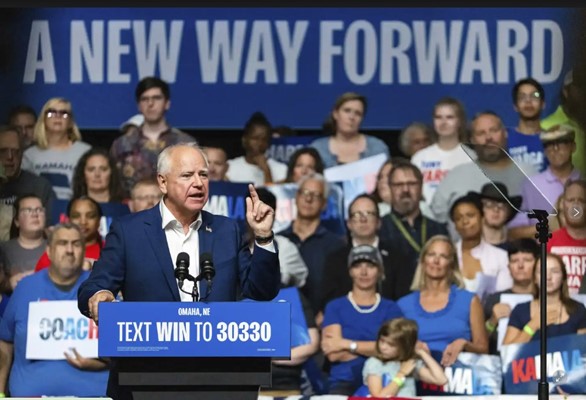
Walz emphasized that these cumbersome regulations added unnecessary costs and delays, hindering progress. To address this, he signed legislation to streamline the process, removing the requirement for developers to prove the necessity of clean energy projects and eliminating the need to consider alternative sites and transmission line routes. These changes aim to accelerate the development of solar, wind, and other renewable energy projects in Minnesota.
With Walz now selected as Kamala Harris' running mate, his efforts in Minnesota are gaining national attention. Should Harris win the presidency in November, Walz's experience in pushing through these critical reforms could position him as a key figure in shaping national climate policy. Amelia Vohs, Climate Program Director at the Minnesota Center for Environmental Advocacy, expressed hope that Walz could bring this streamlined approach to the federal level, potentially making a significant impact on the nation's progress toward climate goals.
While replicating Minnesota's reforms on a national scale would be challenging due to a divided Congress, experts note that most renewable energy projects are developed on private land, making state or local permitting laws crucial. States like New York, California, Illinois, and Michigan have already made strides in reforming their permitting processes, each taking a unique approach to streamline the adoption of clean energy.
The urgency of speeding up the clean energy transition cannot be overstated. Matthew Eisenson, a senior fellow at the Sabin Center for Climate Change Law, stressed that the faster emissions are reduced, the quicker the climate can stabilize, avoiding the worst impacts of climate change. He noted that lengthy permitting processes can cause renewable energy projects to die on the vine, delaying critical climate action.
A study by the Lawrence Berkeley National Laboratory found that most wind and solar projects take four to six years to become operational, with two-thirds of that time spent on permitting. The study also revealed that local zoning laws and community opposition were major factors in causing significant delays and cancellations of renewable projects. The reforms in Minnesota aim to cut these permitting times in half, a change that could be vital for the success of clean energy initiatives.
Before the new law, Minnesota's permitting process was slow and growing slower, with the time required to approve solar projects increasing from 10 months in 2015 to 18 months by 2019. The new legislation, developed in collaboration with utilities, renewable developers, labor unions, environmental advocates, and energy policy nonprofits, strikes a balance between creating efficiency and maintaining environmental protections.
Walz signed the bill at a wind farm in southern Minnesota, marking a significant victory for his administration and the state's clean energy future. The law is expected to save several months in permitting time for projects like large transmission lines or electric facilities, with Xcel Energy, Minnesota's largest utility, estimating that these cumulative time savings will add up to decades when considering the number of projects in the pipeline.
The Minnesota Chamber of Commerce, while supportive of the reforms, suggested that the state should apply these changes across all industries, not just clean energy. However, the focus remains on renewable energy as the state aims to meet its ambitious climate goals.
House Majority Leader Jamie Long, who worked closely with Walz on the legislation, expressed hope that other states would follow Minnesota's lead. He emphasized that Minnesota's success in bringing together business, labor, and environmental groups to support the package sends a strong message that such reforms are possible.
If Walz becomes Vice President, his track record in Minnesota could serve as a model for national climate policy, potentially accelerating the United States' transition to a clean energy future.